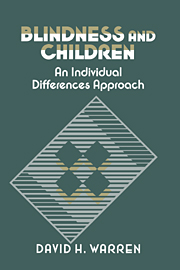12 - Longitudinal studies
from Part IV - Summary
Published online by Cambridge University Press: 02 December 2009
Summary
In research with children, a fundamental concern is how abilities and characteristics change over time as age increases and development proceeds. Two basic research models have been used in this quest, the crosssectional model and the longitudinal model. The cross-sectional model involves taking samples of children at the various ages required by the research design, evaluating each sample, and constructing the developmental picture by charting characteristics as a function of chronological age. In the longitudinal model, one sample of children is selected at the earliest age required, and then the same children are followed as they age and are tested at each subsequent age level. The developmental picture emerges as the children's results are accumulated over time.
Each of these models has significant advantages and disadvantages. The cross-sectional model has the important advantage that the time required to complete the research is relatively short: testing can be completed efficiently because the samples at the various ages are simultaneously available and can be tested in short order. However, the critical shortcoming of the cross-sectional model is that although it reveals the general nature of development, it does not tell us about its continuity within individuals. The longitudinal model reverses these features. It has the major advantage that it reveals the developmental continuity (or lack thereof) within individual children. However, it is inefficient in terms of time and expense and has the additional problem of attrition; for a variety of reasons not under the researcher's control, not all children in the initial sample will be available for evaluation at subsequent test times.
The vast majority of developmental research has been conducted using the cross-sectional model.
- Type
- Chapter
- Information
- Blindness and ChildrenAn Individual Differences Approach, pp. 308 - 317Publisher: Cambridge University PressPrint publication year: 1994



